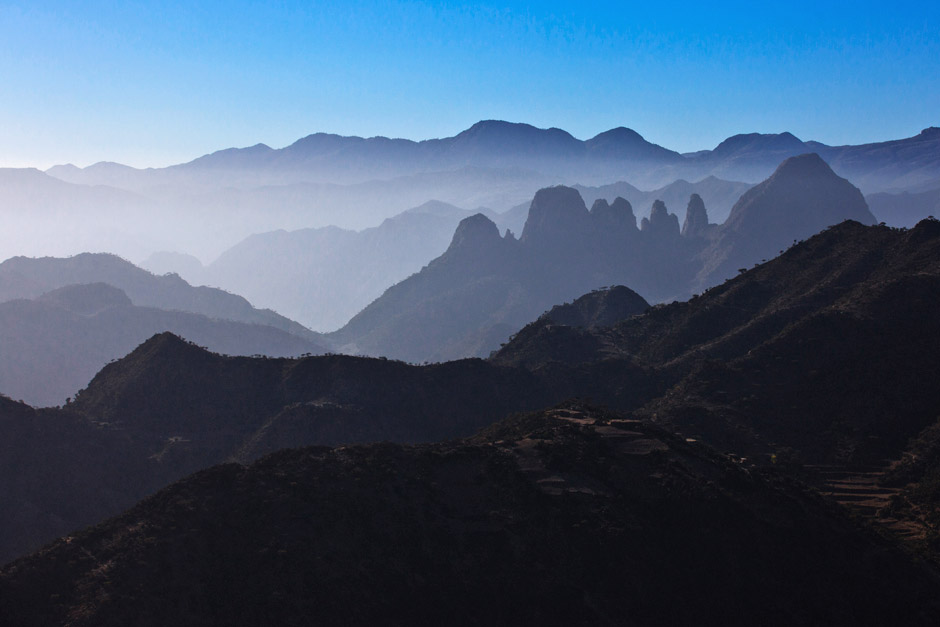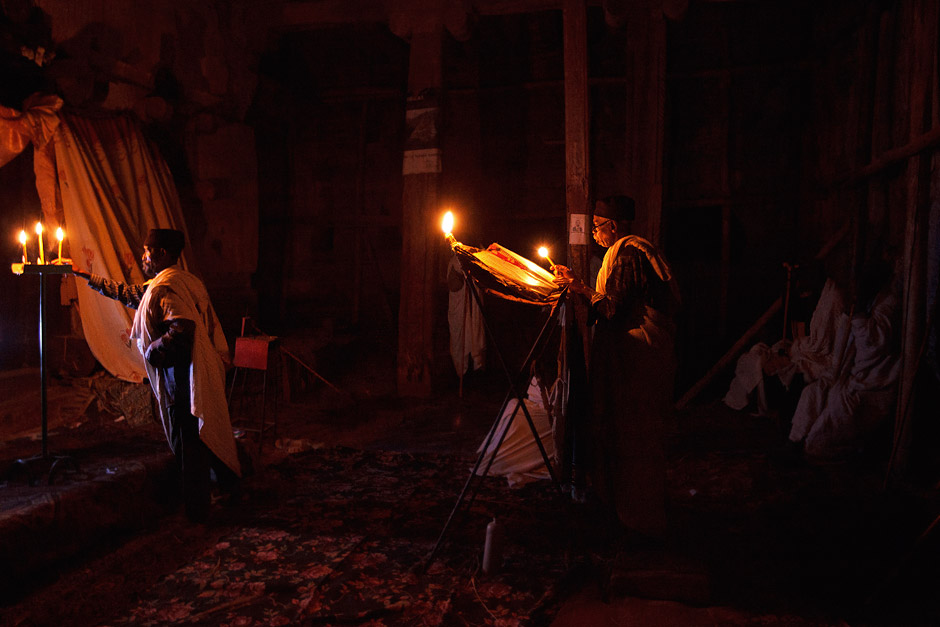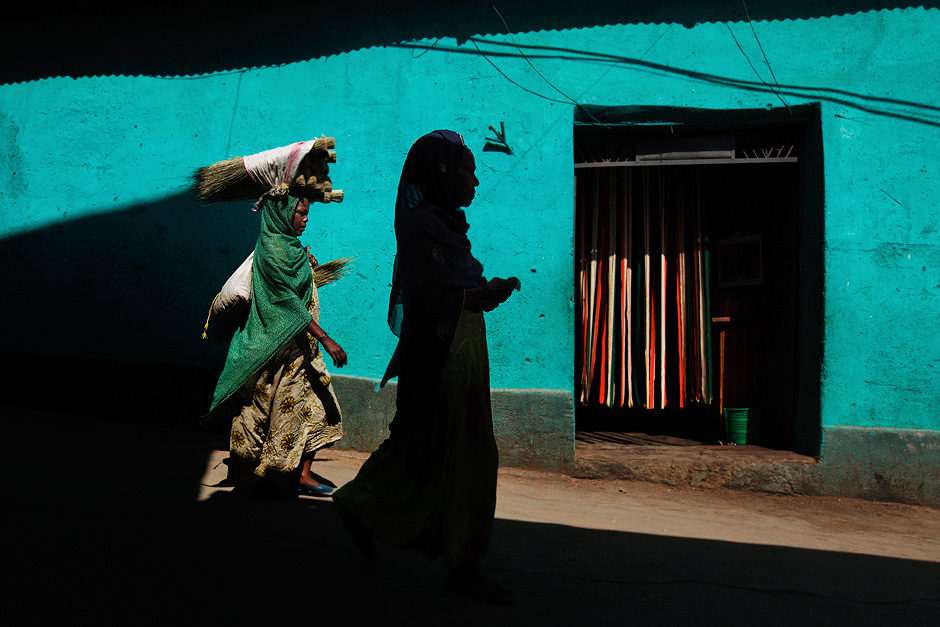 When you drink four chocolate milkshakes at a Western cafe, when you would rather chat to other travelers than take photos, when you arrive at a camel market, but don’t care about shooting anything and just want to catch up on sleep—that’s when you know you’re getting tired, getting close to burning out.
When you drink four chocolate milkshakes at a Western cafe, when you would rather chat to other travelers than take photos, when you arrive at a camel market, but don’t care about shooting anything and just want to catch up on sleep—that’s when you know you’re getting tired, getting close to burning out.
Maybe it’s the long motorbike journeys, maybe it’s the fact that I have left my “sanctuary”, the area around Mekele, or maybe, it’s just because I’ve been in this country for pretty long. Whatever it is - I am indeed pretty damn tired. But, I ain’t ready to stop just yet. :)
The last leg of this adventure is a trip to the South, to the sometimes infamous Lower Omo Valley. I’ve heard from a few people that it might be incredibly disappointing, but heck, it might, just might turn out to be amazing and if that is the case, well, then I gotta see it for myself.
The photos in this post are a very brief overview of where we’ve been over the past couple of weeks.
The first journey after our trip to Enderta was into the mountains of the very far North Ethiopia, bordering Eritrea. We spent the night in a mountain village. The views weren't too bad.
 The night-halt was in the stone house in the image above. A cosy and atmospheric little place. The only problem—bed bugs! The tiny monsters didn't let us sleep all night and the hike the next day was very demanding.
The night-halt was in the stone house in the image above. A cosy and atmospheric little place. The only problem—bed bugs! The tiny monsters didn't let us sleep all night and the hike the next day was very demanding.
 The path through the mountains is that little line in the bottom-right corner of the image above. This was the easy part. The hard part was the ridiculously steep walk down and then up, on the way back.
The path through the mountains is that little line in the bottom-right corner of the image above. This was the easy part. The hard part was the ridiculously steep walk down and then up, on the way back.
The final destination was the ancient monastery called Gunda Gundeh. It wasn't anywhere nearly as photogenic as I had hoped, but that's only because my hopes were set very high. The morning after the walk we noticed women lined up outside the church. The combination of the rock church, the warm candle light flickering from inside and the women made for an interesting scene.
Monks inside the church during morning mass.
 After leaving Tigray we almost immediately traveled to the far Eastern Ethiopian town of Harar. Harar is a street photographer's dream. The only problem is that most women are really fed up with photographers. My solution was to take the camera put up to my eye, stand there and be clearly seen as a photographer by everybody on the street. The shy or angry ones would avoid me, the ones who didn't mind or didn't notice would walk into my frame. Since this isn't portrait photography and you can't really make out the faces of the people I didn't have any moral dilemmas with having those who didn't know they were being photographed in my shots.
After leaving Tigray we almost immediately traveled to the far Eastern Ethiopian town of Harar. Harar is a street photographer's dream. The only problem is that most women are really fed up with photographers. My solution was to take the camera put up to my eye, stand there and be clearly seen as a photographer by everybody on the street. The shy or angry ones would avoid me, the ones who didn't mind or didn't notice would walk into my frame. Since this isn't portrait photography and you can't really make out the faces of the people I didn't have any moral dilemmas with having those who didn't know they were being photographed in my shots.
Harar is full of little alleys and at times there are beautiful photos to be made, when the circumstances align. This young lady saw me with my camera and thankfully she wasn't against having her photo taken hence not ruining my image by putting her scarf over her head as so many other women do.
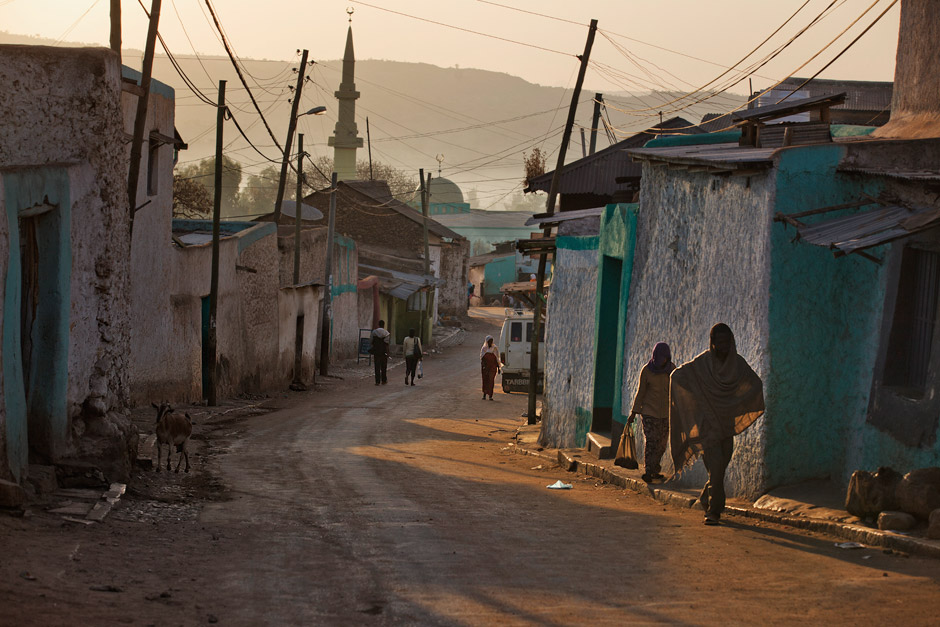 One of the main streets of the Old Town has views to the main Mosque. I felt that an image with the minaret in the background was very telling of Harar and that's why I hung around for some time.
One of the main streets of the Old Town has views to the main Mosque. I felt that an image with the minaret in the background was very telling of Harar and that's why I hung around for some time.
 Harar's Old Town is not too different from old towns in Rajasthan, India. There is a sewing street, colorful vegetable markets and many fascinating characters just hanging around. It's the kind of place where you just have to get lost to see what you can discover around the next corner.
Harar's Old Town is not too different from old towns in Rajasthan, India. There is a sewing street, colorful vegetable markets and many fascinating characters just hanging around. It's the kind of place where you just have to get lost to see what you can discover around the next corner.
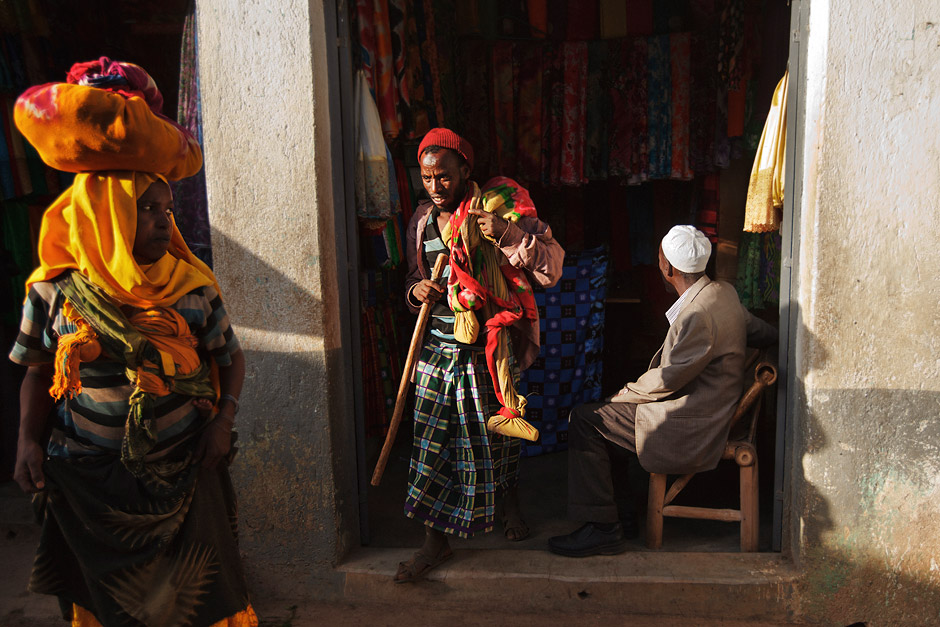 Harar is known for being a colorful place and indeed if you want to photograph colorful scenes the place won't dissapoint.
Harar is known for being a colorful place and indeed if you want to photograph colorful scenes the place won't dissapoint.
 In a section of the market in Old Town women sell firewood. These women don't reside in Harar and for this reason they're quite ok with having their photos taken. I guess they haven't felt the photo overload from the visitors, yet.
In a section of the market in Old Town women sell firewood. These women don't reside in Harar and for this reason they're quite ok with having their photos taken. I guess they haven't felt the photo overload from the visitors, yet.
 By one of the city gates in Harar there always seems to be burning rubbish in the mornings. Smoke and rays of the rising sun equal to something special in my books and so I just had to stick around and make some photographs.
By one of the city gates in Harar there always seems to be burning rubbish in the mornings. Smoke and rays of the rising sun equal to something special in my books and so I just had to stick around and make some photographs.
 Same place - different scenario - still pretty magical combination of light and smoke.
Same place - different scenario - still pretty magical combination of light and smoke.
Having come so far East we decided to explore some of the neighboring towns so, we went to Dire Dawa, considered Ethiopia's second city. New Dire Dawa is about as boring as a city can get, but the old part has a large, bustling market, full of color, characters and people who are in general much more inclined to having their photos taken then the folks at Harar.
 This vegetable seller seemed to be feeling the heat of the day. I smiled, gestured if I could take her photo and she basically remained still. I smiled after the photo and she gave me a very slight smile back.
This vegetable seller seemed to be feeling the heat of the day. I smiled, gestured if I could take her photo and she basically remained still. I smiled after the photo and she gave me a very slight smile back.
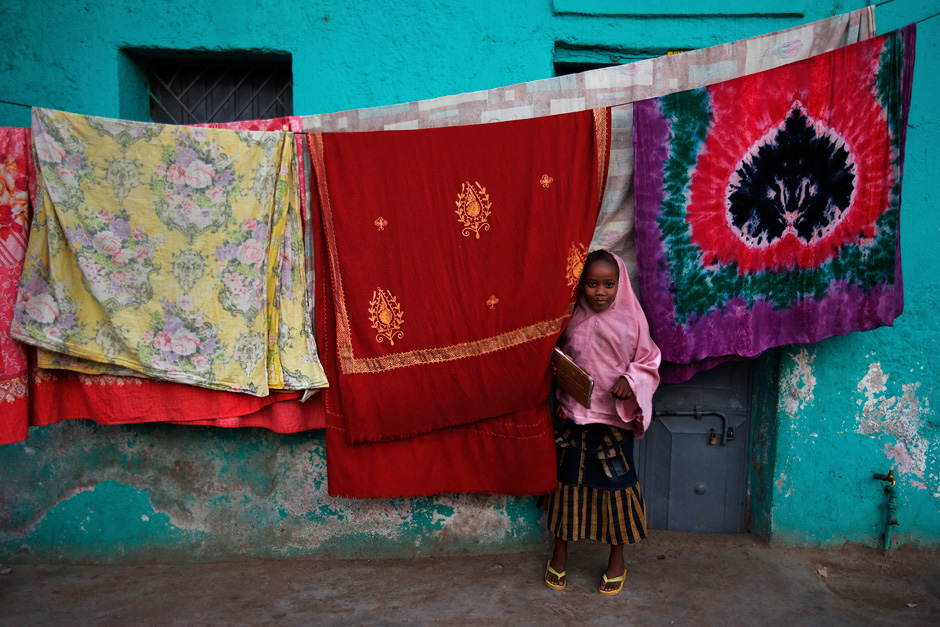 Dire Dawa, like Harar is full of color. You just have to pick your moments, walk the streets and awards will inevitably follow.
Dire Dawa, like Harar is full of color. You just have to pick your moments, walk the streets and awards will inevitably follow.
 During the morning we found a camel selling section at the Dire Dawa market. There was a rather large herd who were just hanging around, until two herders started to direct them somewhere. Turns out the camels were headed for the train station where they would board a train to Djibouti and then a ship to the Arab Peninsula, where the locals say the camels are actually eaten.
During the morning we found a camel selling section at the Dire Dawa market. There was a rather large herd who were just hanging around, until two herders started to direct them somewhere. Turns out the camels were headed for the train station where they would board a train to Djibouti and then a ship to the Arab Peninsula, where the locals say the camels are actually eaten.
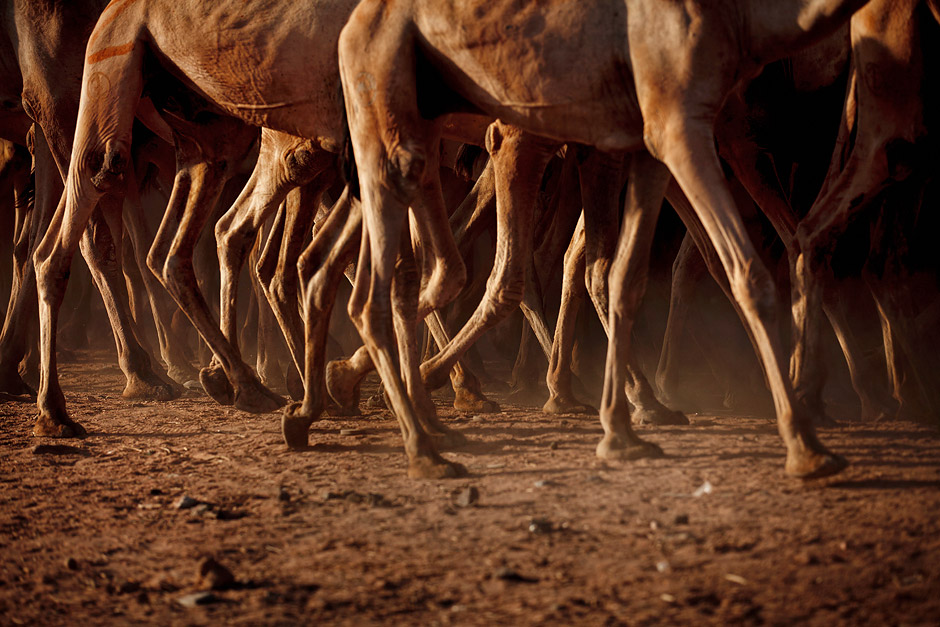 Lots of camel legs heading for the train station.
Lots of camel legs heading for the train station.
 This is the only image I got at Babile's camel market. Heat and lack of inspiration were my obstacles. It is on that day that I knew I needed to get some R&R before the next adventure.
This is the only image I got at Babile's camel market. Heat and lack of inspiration were my obstacles. It is on that day that I knew I needed to get some R&R before the next adventure.
I write this blog post from Arba Minch, a town in the South and the last developed place before the Omo Valley. The journey to here was surprisingly enjoyable and smooth, what happens after is possibly another story. There are already some complications with guides and agreements. I guess I have come to expect challenges in Ethiopia, but for some reason, I still do not want to leave this country, four months after I've been here.

